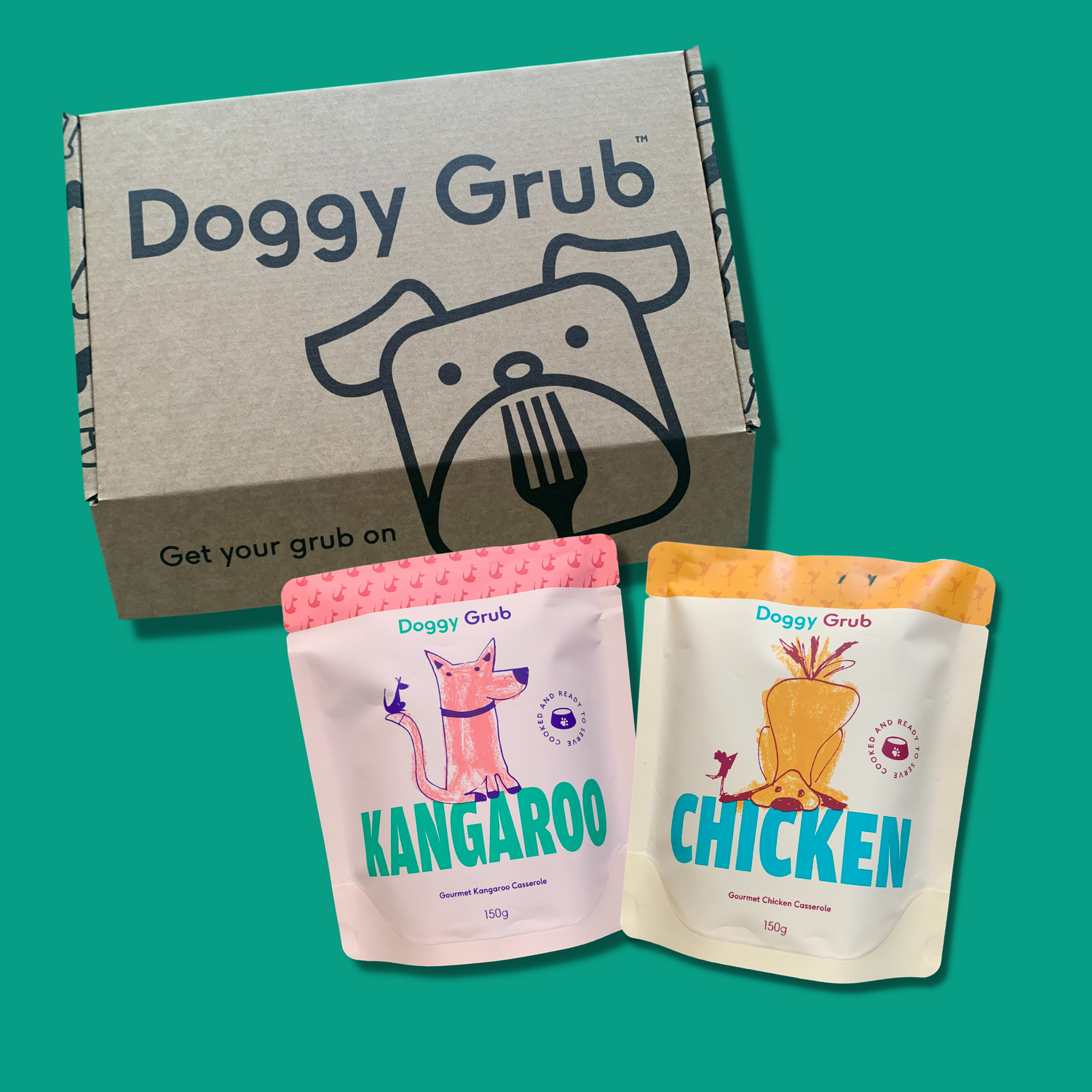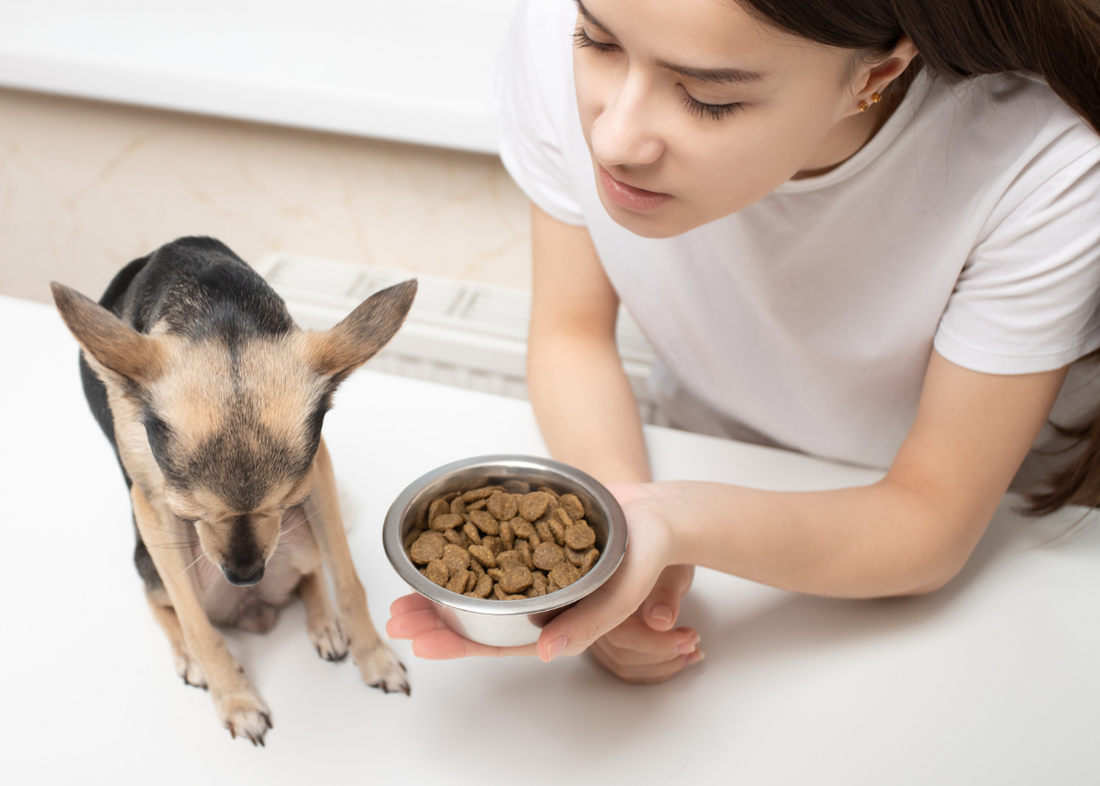Dogs are known for being loyal and loving companions. But sometimes, they can be really picky about their food- unless you’re a Labrador owner.
We know it can be frustrating when your dog turns their nose up at their food, especially if you’ve spent a lot of money on it. It can be difficult to find the right balance between high-quality food and variety that will make your pup happy.
Fortunately, there are some tips and tricks that you can use to get your fussy dog to eat.
Here's the thing about picky eaters...
Fussy dogs are common, but that doesn’t make it any less difficult to deal with. Sometimes, it can seem like nothing you do will work and it can be a real challenge to get them to eat. Before we get too deep into tips and tricks to get your pup licking their bowl clean, it is important to understand that picky eating habits can stem from underlying health issues, so start by getting your dog checked out by your vet to make sure everything is alright.
Once you’ve established that your dog doesn’t have any underlying issues, start by looking at your feeding habits: are you free-feeding, and your dog has free access to his bowl? Are you feeding too many treats throughout the day? Are you in the habit of offering table scraps or sharing your juicy steak with your pup and now they refuse to eat anything else?
All these habits can be reasons why your dog has become fussy.
Keep on reading to learn about strategies to get your dog back on track!

What are some of the ways you can get your dog to eat?
Without proper nutrition, your dog’s health can suffer. Puppies, in particular, need to eat in order to grow and stay healthy. When it comes to getting your dog to eat, there are a number of things that you can do.
A quiet environment and a set feeding schedule.
Eating is an important part of your dog's daily routine. To ensure they get the nutrition they need, create an environment that is calm and free from distraction. This means setting up a quiet eating area away from other pets, children and foot traffic. It can be the laundry room, or outside to limit disruption.
It's also important to have set mealtimes for your pet; this helps them develop regular eating habits. If you notice that your dog isn't showing an appetite, take their bowl away and do not give them any treats or food until their next mealtime. When they are eating, be sure to offer praise and encouragement - but don't offer snacks as a reward when they've refused food.
It's not uncommon for fussy pups to go on hunger strikes in an attempt to get their way. For instance, if you've been rewarding your pet with treats or table scraps, they may become accustomed to expecting an upscale meal at each feeding session. The best way to handle this situation is to remain calm and firm so that you don't inadvertently reinforce this type of negative behaviour.
Dogs look up to us for guidance so stay consistent and don't worry if they miss a meal or two; as long as they don't continue skipping meals and have ample access to water, it's nothing to be concerned about.
Add variety… but not too much!
Picky dogs may not actually dislike their food, they may just get bored by it. This is why it is important to try to incorporate a variety of textures and flavours into their diet in order to keep them interested and excited.
You can try adding things like fresh fruits and vegetables to their meals or wet food with their usual kibble.
But don’t switch too often. Give your dog the time to get used to their new food, even if initially, they turn their nose up to it.
Limit the amount of treats you feed throughout the day. We know how you feel when the panic sets in and you think your dog is not getting all the nutrients they need: out come the treats to try and make up for it. Unfortunately, feeding too many treats can lead to obesity and other health problems and contributes to your dog’s lack of appetite at dinner time.
Doggy Grub is dedicated to providing your dog with the highest quality of food. We understand that just like people, dogs have preferences and can be choosy when it comes to what they eat. That's why we make sure all of our meals are both nutritious and delicious! Our recipes provide your pup with all the nutrients and minerals they need while giving them the opportunity to enjoy classic flavours reminiscent of a Sunday roast or ‘kangaroo’ bourguignon without having to worry about missing any essential nutrients.
Warm up your dog’s food
Dogs possess a highly developed sense of smell, making the scent of the food far more important to them than its taste.
Warming up your dog’s food, especially if you are feeding a homecooked-type diet, can help to make the food more enticing for them and get their appetite going.
You can also make a tasty gravy by mixing a flavour boost blend with a little bit of water or coconut oil. Pour it on top of your dog’s food and watch them lick the bowl clean!
And finally, what should you do if nothing seems to work?
If you have tried all of the above tricks without success, don’t give up hope!
With some patience and perseverance, a little trial and error, you should be able to find something that works for your furry friend! That’s why we offer a sample pack so your dog can trial both our Doggy Grub casseroles and see what all the fluff is about, commitment free!
Want to be the first to get your paws onto the hottest topics? Subscribe to our newsletter!
--------------------------------------------------------------------
The Doggy Grub blog is dedicated to helping dogs and their owners achieve happier, healthier lives, changing the way we feed our dogs one bowl at a time! If you would like to know more about our fresh food head to Doggy Grub










